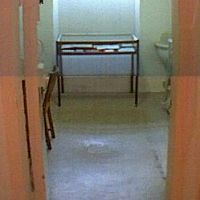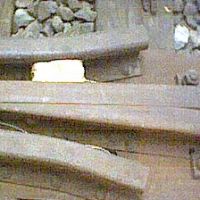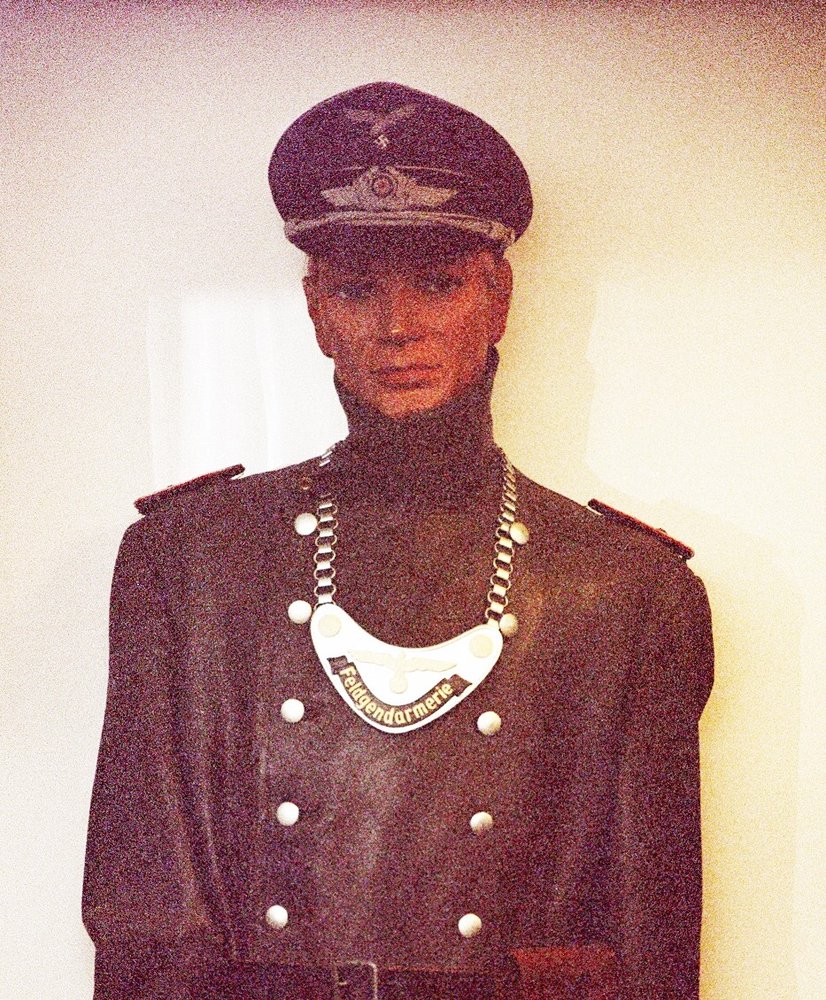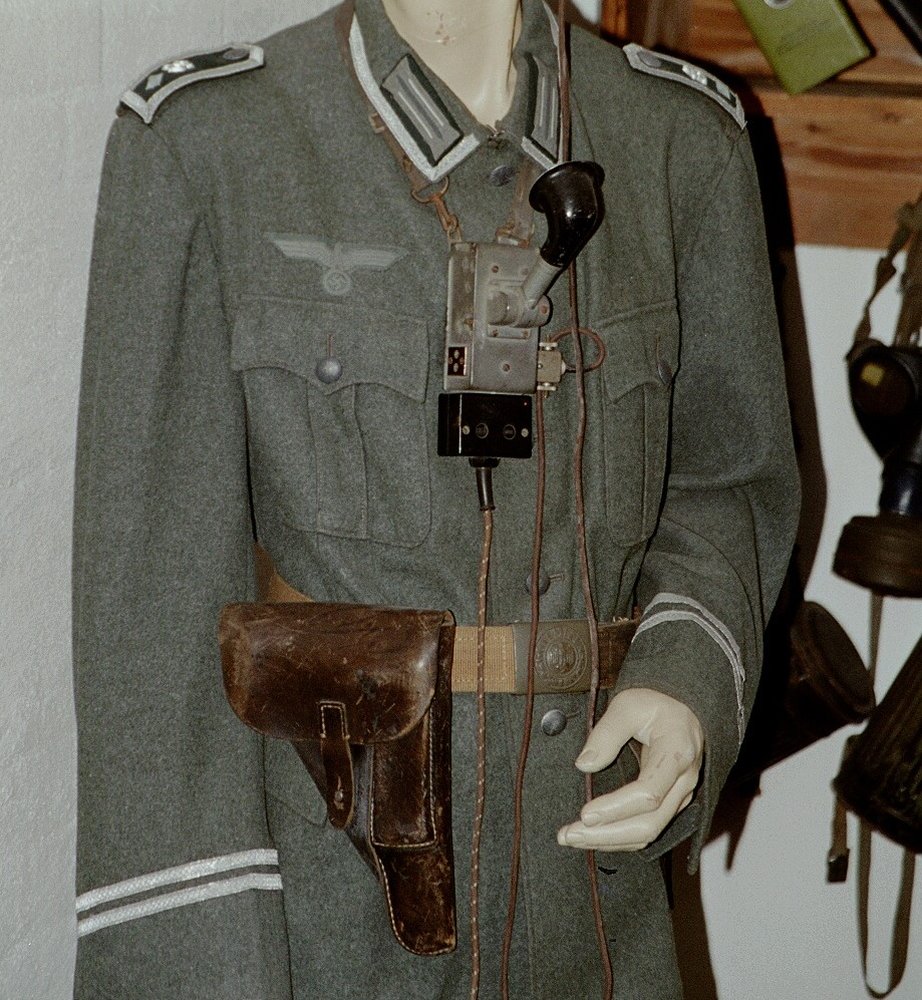Denmark during World War II: Aarhus Museum of Occupation
Photos from my trip to the Kingdom of Denmark in 2001.

Aarhus Museum of Occupation
❝Before World War 2 the Kingdom of Denmark had pursued a policy of neutrality and almost complete disarmament. It was occupied in single day on 9 April 1940, simultaneously with the German invasion of Norway.
Unlike other occupied European states Denmark remained nominally independent, and a Nazi government was not imposed. King Christian X stayed in place and a coalition government practiced limited co-operation under the threat of German reprisals. Allied diplomats were expelled as their countries joined the war against Germany. There was strict government press censorship, and Denmark signed the Anti-Comintern Pact in 1941, making the small Communist Party illegal. The population tried to live as normally as possible in spite of increasing shortages and restrictions.
To the outside world Germany made a great effort to describe Denmark as a model protectorate, an image that gradually faded away. The Danish ambassador to Washington, Henrik Kaufmann, no longer regarded his country as free, and no longer accepted orders from Copenhagen. He singlehandedly allowed the US to establish bases in Greenland. Other Allied bases were made in Iceland and on the Faroe Islands.
The Germans made preparations to round up Jewish citizens, but almost all of the country's 7,000 Jews managed to escape to Sweden aided by Danish civilians.
The vast majority of the Danish merchant fleet responded to calls from London to sail to Allied ports. As a result more than 60 per cent of the country's merchant fleet were sunk by the Germans, and 900 Danish sailors were killed transporting Allied supplies. The curtailment of trade links with Allied countries, and the strain of supplying German war needs, contributed to a series of economic problems. Inflation and rationing which were acute by 1942, encouraged the Danes to become increasingly defiant. Encouraged by The Danish Council in London, an underground espionage network had since 1940 co-operated with British secret services, and London made a great effort to create an actual resistance movement.
In late 1942 Hitler became dissatisfied with things in Denmark and sent a prominent SS official Werner Best to Copenhagen as Commissioner, and the exploitation of economic resources was stepped up. After Stalingrad German military activity in Denmark increased, and the west coast was heavily fortified as part of the Atlantic Wall. In late 1943 the government could no longer accept German demands and resigned. Parliament was also suspended. The remaining Danish navy destroyed its ships, and army and navy personnel were interned.
The Germans made preparations to round up Jewish citizens, but almost all of the country's 7,000 Jews managed to escape to Sweden aided by Danish civilians.
From now on Denmark could not be described as a model protectorate. A Freedom Council took shape as the official underground government, organizing a proliferation of strikes and acts of sabotage. An increasing stream of supplies for the resistance movement was parachuted by the RAF. In 1944 the Danish police force was dissolved and sent to German concentration camps. The situation in Denmark was now similar to that of other German occupied states, only the resistance was not hindered by internal factionalism. From now on acts of sabotage against industry working for the Germans, and against the infrastructure (railways) increased.
But so did German acts of terrorism against civilians. The resistance conducted a war not against German troops, but against informers, the Gestapo, or others working for the Germans.
More than 6,000 containers with supplies were dropped by the RAF. 2,600 major acts of sabotage were carried out against Danish industry working for Germany. Our railway system was sabotaged almost 9.000 times. By the end of the war the resistance movement consisted of about 40,000 armed members.
About 5,000 Danes were killed during the war.
❞ Thanks to the volunteer staff of the Besetzungmuseum in Arhus for this information and for their hospitality and help during my visit.
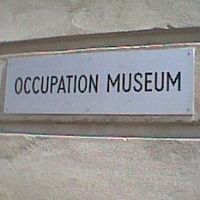
Welcome to the Museum of Occupation.
The Museum started life as a grand manor house, then became the Police headquarters, was taken over by the Gestapo during the occupation, returned to the Danish Police after the war and then finally put in the hands of a group of dedicated volunteers when the Police moved to a brand new HQ.
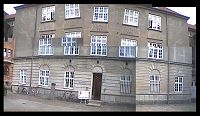
The facade must have taken on dreadful connotations during the Gestapo reign.
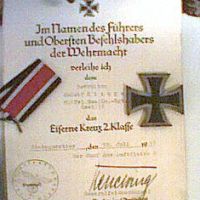
The Iron Cross and citation.
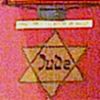
Identity badge for Jews (German = Jude).
The museum also has charts explaining the various categpories and sub categories of prisoner, each with their own emblem. Jews, communist Jews, anarchists, homosexuals, the list goes on.
This Gestapo interrogation cell wasn't a place you'd care to stay. On display were various instruments of torture - brass knuckles, whips and flails - and the floor sloped ominously toward a central drain.
Sabotage
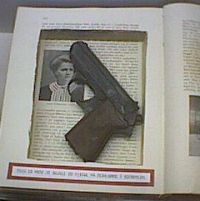
Maxwell Smart would have loved this... "The old Gun in a Book trick"!
This mockup shows a section of railway with plastic explosive ready to blow. There was quite a bit of sabotage performed by the Danish Resistance with the aid of Special Operations Executive (SOE) from London.
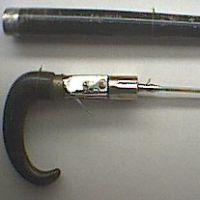
A dagger concealed in an umbrella handle. Self defense or assassination device depending on the circumstances.
German Equipment
The museum has a wide range of equipment on display from Parachute canisters and weapons dropped by the SOE to German Rifles, handguns and uniforms.
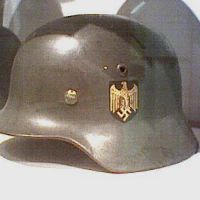
German issue infantry helmet.
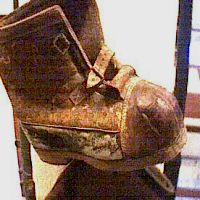
These boots were modelled on Russian boots captured on the Eastern front. they are mainly wool and leather - damn big too! Guaranteed to keep you warm on a long winter night although I wouldn't want to move quickly in them.







